
Auxin-induced nanoclustering of membrane signaling complexes underlies cell polarity establishment (bioRxiv)
Membranes have long been considered somewhat inert materials in a cell’s organization, but it is becoming clear that lipid composition and distribution contributes actively to cell shape and dynamics. Pan et al. examined the contribution of lipids to the shape of epidermal pavement cells in Arabidopsis…
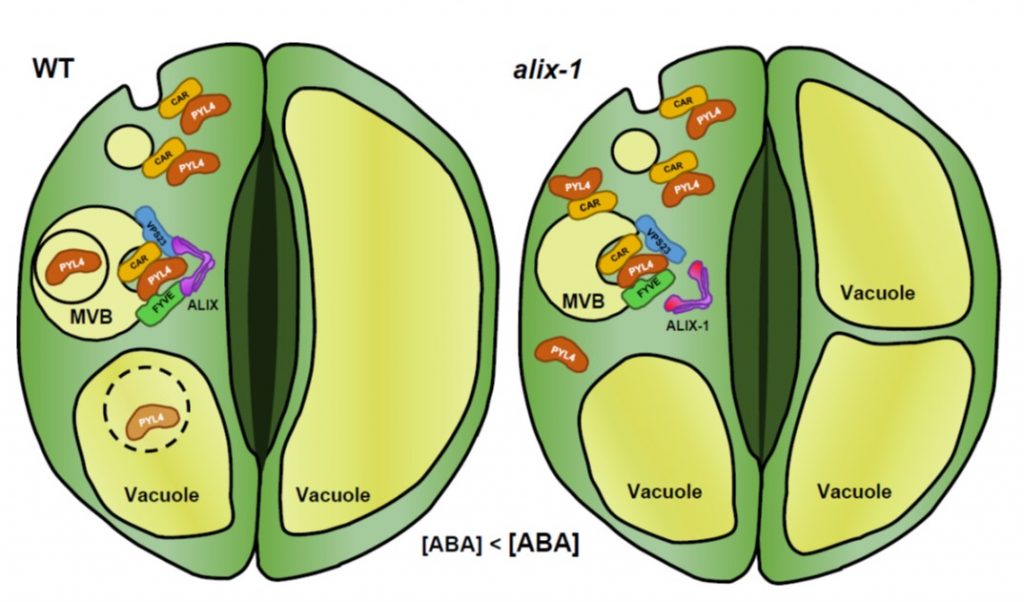
ABA receptor abundance, thus ABA sensitivity, is regulated by ALIX ($) (Plant Cell)
To balance water loss and CO2 assimilation, stomatal aperture is tightly controlled in accordance with environmental changes, mediated by ABA signaling. Here, García-León et al. found that ABA sensitivity and stomatal aperture are regulated by the trafficking and vacuolar degradation of ABA receptors…
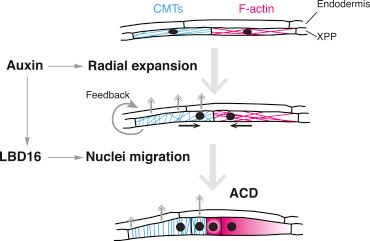
Cytoskeleton dynamics necessary for early events of lateral root initiation (Curr. Biol.)
Symmetric cell division leads to proliferation, and asymmetric cell division establishes differential growth. Formation of lateral roots (LRs) depends on asymmetric division of initially symmetric founder cells. Barro et al. studied the mechanism of asymmetric radial expansion by analyzing cytoskeleton…
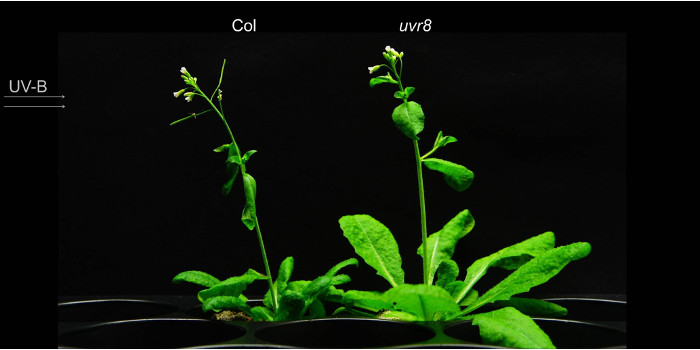
UV-B attracts inflorescence stems
Vanhaelewyn et al. examine phototropism in adult plants. Plant Cell https://doi.org/10.1105/tpc.18.00929
By Lucas Vanhaelewyn1, András Viczián2, Filip Vandenbussche1
Laboratory of Functional Plant Biology, Department of Biology, Faculty of Sciences, Ghent University, KL Ledeganckstraat 35,…
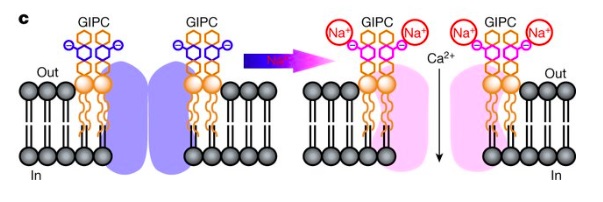
Plant cell-surface GIPC sphingolipids sense salt to trigger Ca2+ influx (Nature)
Soil salinity is one of the most important global problems that negatively affect crop productivity. Jiang et al designed a forward genetic screen in A. thaliana to identify the specific ionic response triggered by salt stress. They mutagenized plants expressing the genetically encoded Ca2+ sensor aequorin,…
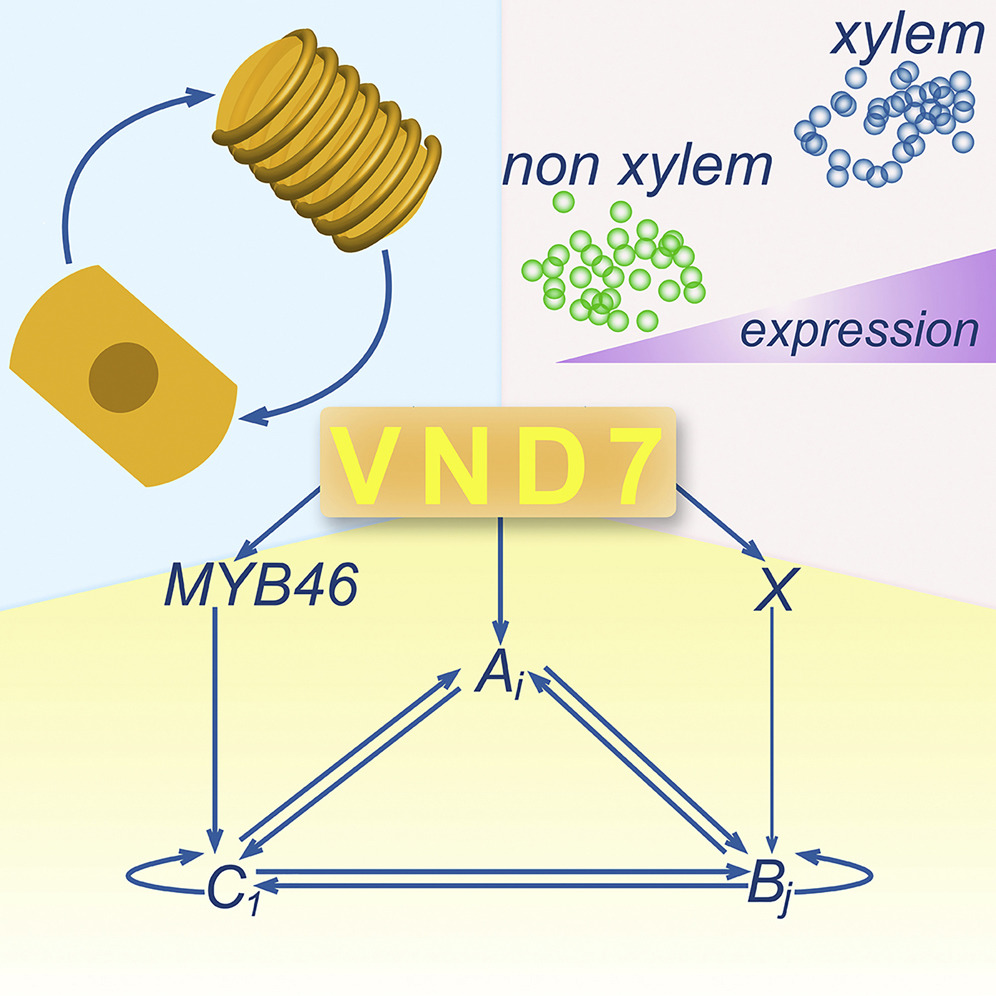
Molecular mechanisms driving switch behavior in xylem cell differentiation (Cell Reports)
Xylem is involved in the movement of water and mineral nutrients through the plants from the roots to leaves; its cells are not totipotent and undergo programmed cell death. VASCULAR-RELATED NAC-DOMAIN (VND) transcription factors are master switches of xylem cell differentiation in Arabidopsis and much…

Plasma membrane-associated receptor like kinases relocalize to plasmodesmata in response to osmotic stress (Plant Phys)
Plasmodesmata are channels through the cell wall that allow molecules and substances to move back and forth as needed; they also play a central role in growth, development and defence of all higher plants. In this study, Grison et al. describe the rapid relocation to the plasmodesmata pores of two plasma…
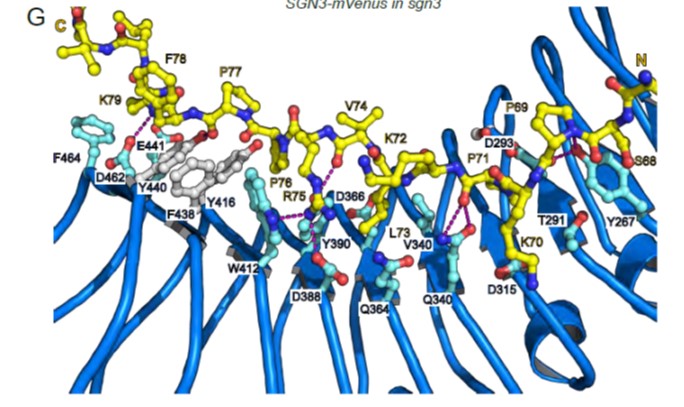
Recognition of sequence-divergent CIF peptides by the plant receptor kinases GSO1/SGN3 and GSO2 (bioRxiv)
SCHENGEN 3 [SGN3, also known as GASSHO1 (GSO1)] is a leucine-rich repeat receptor kinase (LRR-RK) previously shown to interact with CIF peptides (CASPARIAN STRIP INTEGRITY FACTORS) to regulate the development of the Casparian strip boundary in roots. Here, Okuda et al. characterize the CIF/LRR-RK interaction.…
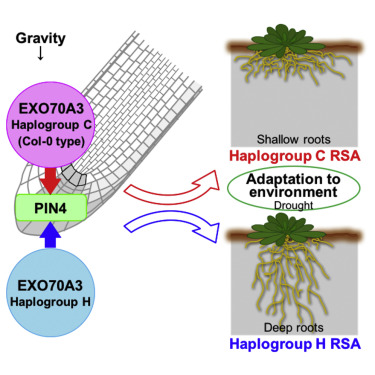
Root system depth is shaped by EXOCYST70A3 via modulation of auxin transport (Cell)
The angle at which roots grow into the soil is modulated by the interaction between genetics and environment, and involves the gravity perception and response pathways including auxin transporters. Ogura et al. did a GWAS analysis of the gravitropic response of different Arabidopsis accessions in…

